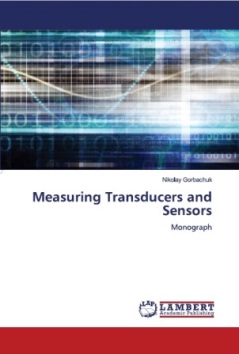Transducers, gauges, sensors - Information portal © 2011 - 2025 Use of material is possible by placing an active link
Home >> Load cells, strain gauges >> Strain softening materials
Strain softening materials
Waterproofing gages after their installation by measurements carried out, as a rule, in all cases where possible to increase the ambient humidity above 50 %. The most widely used method of relative seal section, which consists in applying to the installation location of strain gages hydrophobic compounds and sealants. Typically, such compositions have good adhesion to the substrate and the test surface gages why as adhesives, after hardening are integrally formed with the gage .
Hydrophobic compounds and sealants should not be deformed due to shrinkage or change the environment, as well as significantly reinforced areas of measurement and must maintain the ability to elastoplastic deformation. They should also not have a chemical effect on the material strain gages and wiring harness.
Used for the purpose of softening tensometry coverage is divided into film, applied in several layers with a total thickness of 50 ... 100 microns of the soft sealant to the elastic modulus of 100 MPa is typically applied by one layer thickness of 2 ... 3 mm, and a solid elastic modulus of more than 100 MPa, applied one or more layers of total thickness from 0.5 to 2 ... 3 mm. Thin Film coating solutions made of adhesives BF -2, F7T, 88 -H and insulating enamel 1201.
Adhesive 88 -H solution produced in the form of rubber mixture number 31, with the H - butylphenol formaldehyde resin 101 in the complex solvent of two parts of ethyl acetate and one part of fuel. The film adhesive is cured without additional heating . Water absorption factor of 0.1 ... 0.2%. Clay stands against fresh and salt water, but is unstable against oil and petroleum products. Normal storage period 3 months. It is used as supplied.
Enamel insulation 1201 is generally used for protection against moisture and slat open contacts of electrical machines (brushed glaze) . Water absorption coefficient of ~ 0.1 %. Used as supplied and cured at normal temperature and humidity. Normal storage period - a year.
Soft cover is made of a softening petroleum jelly, paraffin- petrolatum mixtures of lubricating wax blends and lubricants, as well as sculptural clay.
Technical acid-free vaseline (lubricating VH ) is a lubricant with low melting temperatures dropping to about - 325 Water absorption coefficient varies from 0.1 to 1% based on the volume of air and gas pore vaseline weight. Normal storage period of up to three years. Consume it possible to be able to supply after stirring at T = 335 ... 345 K.
Vaseline, paraffin mixture is composed of petroleum jelly and paraffin in various weight ratios depending on the operating temperature and the position in space of the insulated poverhnosti.Temperatura dropping from 325 to 345 K. The coefficient of water absorption of 0.2 to 1.0%. Recommended composition of mixtures of 3 : 1 ( petrolatum to paraffin by weight) and 1: 3. In the first case the mixture have higher insulating properties and adhesion, the second - greater rigidity and heat resistance up to 315 ... 335K. A mixture of the chosen component ratio is thoroughly stirred at T = 345 ... 355 K within a few minutes and slowly cooled to normal temperature. The term normal storage - up to 3 years.
A mixture of wax and grease lubrication or compounds include the addition of beeswax number of plasticizing and sealing components, as the wax has insufficient adhesion and is prone to cracking at low temperatures. The table (below) shows the recommended formulations wax mixtures and lubricants (weight %).
Clay sculpture produced by enterprises of local industry, and usually has a gray- green color. Water absorption coefficient of 0.2-0.3 %. Drop temperature of about 315 K. It is used in a position to supply heated to 325 K. The normal storage period of up to three years.
Solid softening cover is made of plastic and bituminous compounds, in particular carbinol - cement and epoxy, epoxy putty, cable, and mass bitumen caulking.
Cement - carbinol compound comprises carbinol syrup filler - from fine Portland cement and hardener - benzoyl peroxide (see above) or nitric acid. Water absorption coefficient of about 0.1 .. .0,2 %. Compound has good adhesion to masonry materials, plastics, most metals and alloys , except for copper and copper alloys. The most frequently used compound of : carbinol syrup 78 % 20% portland cement, 2% benzoyl peroxide. The shelf life of cooked compound 15-20 min period of normal storage components to a year.
The epoxy compounds and fillings are prepared on epoxy resin ED -5 and ED-6 with the addition of curing agents, polyethylene polyamine or hexamethylene diamine and bottoms. To reduce the stiffness in the compound administered plasticizers - polyester -9 or IFG 315. Epoxy compounds are of very low coefficient of water absorption (less than 0.05 % at 24 h ), good adhesion to most materials and sufficient acid and alkali resistance. As a means to seal section, they have significant drawbacks - fragility, susceptibility to cracking and breakdown of adhesive bonds on the contact surface during the deformation, as well as toxicity. For the purposes of hydroprotection tenzorezis -tors are commonly used cold-curing epoxy compound of the following composition (percentages by weight ): epoxy resin ED-5 -85 % polyester MGF- 9-8 % polyethylenepolyamine - 7%. The viability of the finished compound - 1 hour of preparation. The term normal storage components to a year.
Epoxy Putty E -4020 is formed by mixing at normal temperature of 93 wt. h Filler E -4020 and 7 wt. h hardener number 1. The viability of putty - 1 h after preparation. Normal storage period to one year.
Cable weight of MB- 90 is a mixture of bitumen BN- W - 20% BN -U -80 %. Water absorption coefficient of less than 0.05 %. Drop temperature of about 375 K. The mass is readily soluble in organic solvents, petroleum products and oils, as well as washed out with water containing these agents. It is used in molten state or in solution in cold petrol. Shelf life is unlimited.
Bitumen putty number 3 is a compound composition (weight %): bitumen grade B -25 %, pine rosin - 45 % beeswax - 20%, adhesive rubber - 10%. Coefficient of water absorption of 0.1 %, the temperature dropping about 355 K. It is used as delivered in molten form.
ðóññêèé / english

• Information about various converters and sensors of physical quantities, parameters of various physical processes is presented.
• Electrophysical properties and effects in various electrical materials.
• Theory, experimental results, practical application

See also:
CONVERTERS, GAUGES, SENSORS
Information, news, advertising


